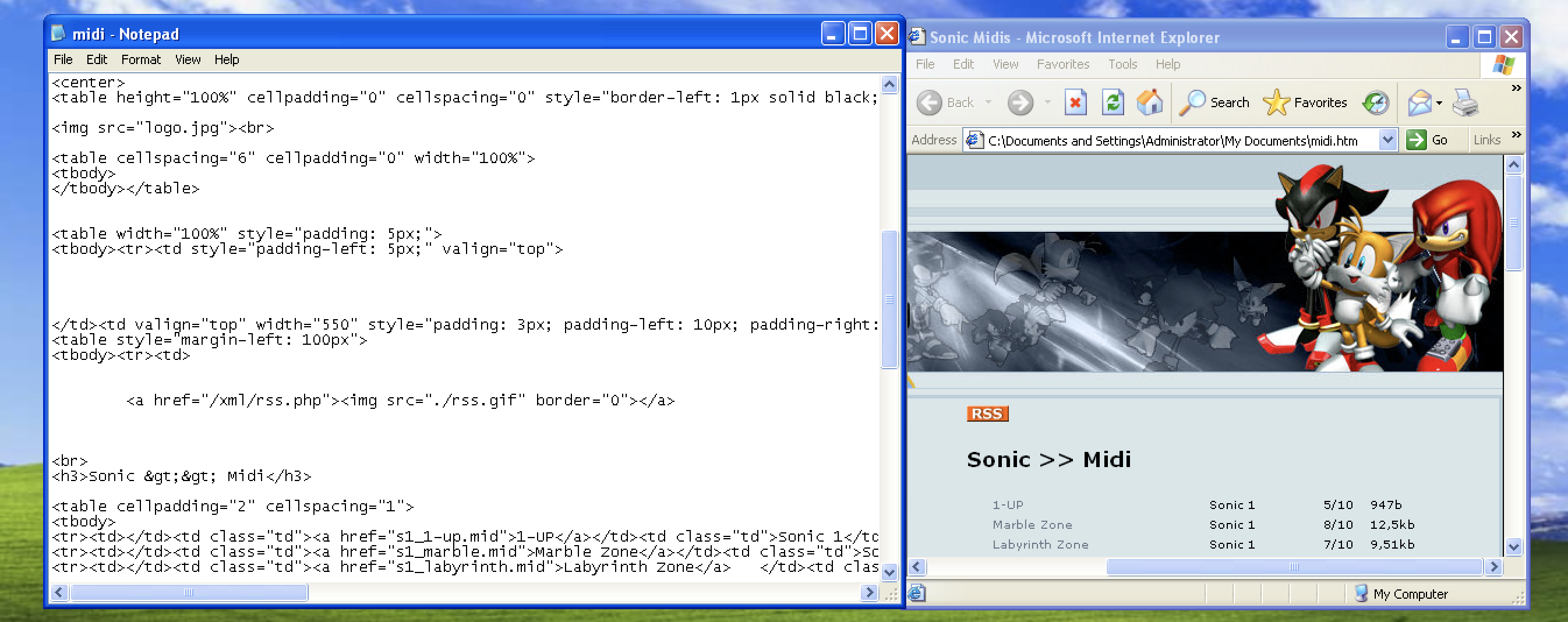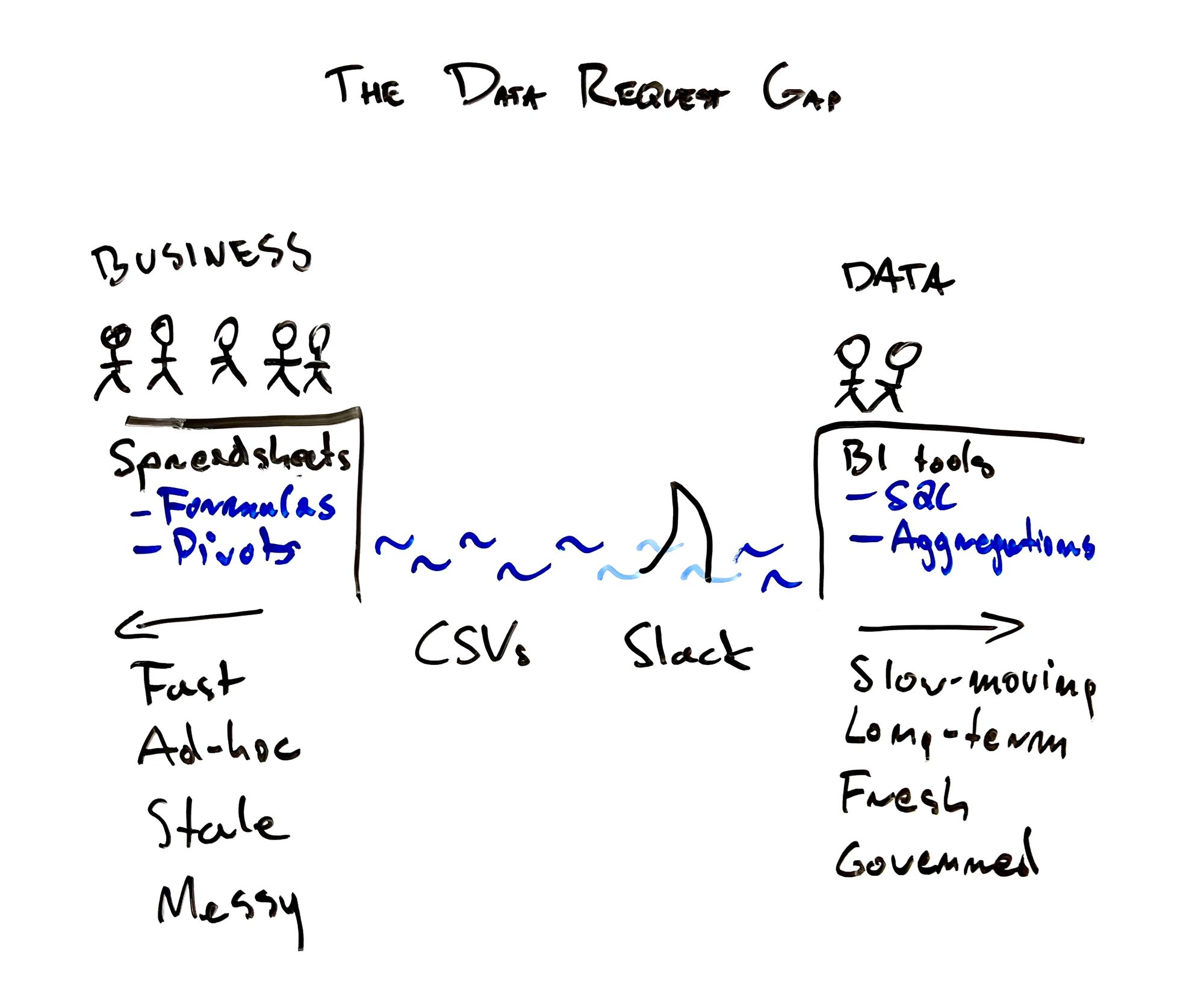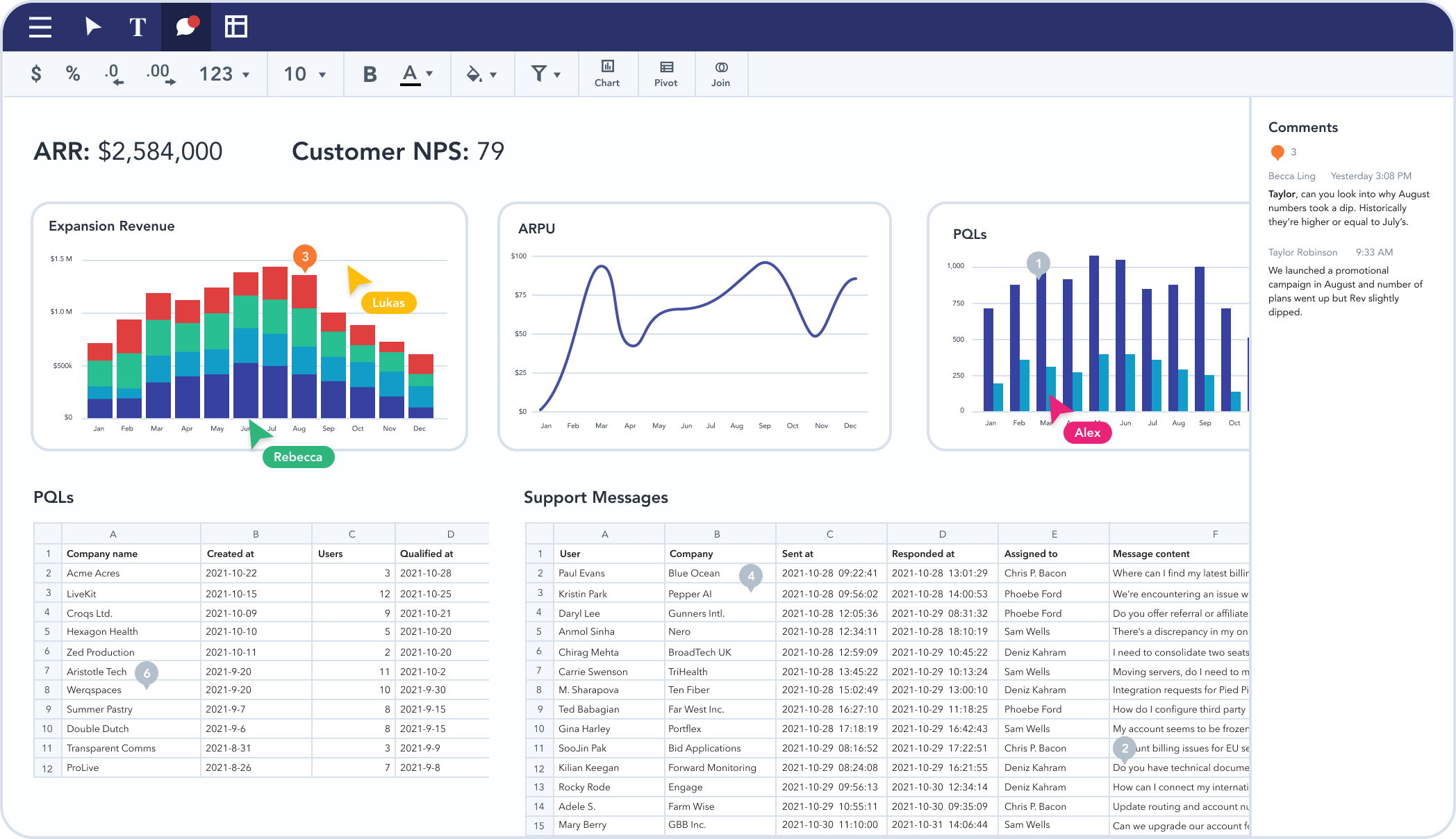Introducing Canvas
When I was a kid, I would stay up all night making websites for my Pokemon. I distinctly remember the thrill of making changes and seeing them appear online instantly. That was the first time I realized I could make things, not just accept them as they are.

Since then, I have watched web development transform from hackers throwing simple HTML pages together to the modern practice of software engineering. It’s been exhilarating to witness that transformation for a second time, this time with data.
As with code, data has come a long way from hand-crafted SQL. It’s now a serious career for data analysts, data engineers, and analytics engineers. It drives decisions at the best companies – you can be either data-driven or out-of-business.
There has never been a better time to be a data practitioner – real data modeling tools, powerful notebooks, version control. CI/CD! There is an explosion of excellent data tools built for data teams. It’s time to bring business teams to the party. 🥳
“Can you slice this by country instead?”
I met my cofounders Ryan and Will at Flexport, where we helped drag the freight industry kicking and screaming into the internet era. Moving containers in the real world with software requires making high-velocity decisions with unreliable data from many disparate sources.
We watched our data team spend a ton of time maintaining BI tools, only for business teams to hit the “export to CSV” button. After talking to folks at other high-growth startups, we realized the problem is much more prevalent than we thought (and Flexport was actually in a great spot).

We saw data analysts drowning in late-night slacks, trying to keep up with mundane data requests. We saw business teams giving up on waiting for data and pivoting stale spreadsheets instead. And worst of all, we saw the breakdown of trust between the two sides of the house.

Why is this still a thing: the data request gap
There are very good reasons to centralize data in a single source of truth. You want to make sure everyone in your organization is working off of the same revenue numbers. And you want to make sure the numbers are correct. But loading, cleaning, and modeling that data is a long and labor-intensive process. Those 600-line SQL queries are there for a reason.
Not everything is a mission-critical chart. For every strategic dashboard, there are a dozen ad-hoc analyses thrown together to test a quick hypothesis. It wouldn’t make sense to expend the same amount of effort into strategic and tactical analysis.
Fast-moving business teams can’t afford to wait on every decision. The majority of ad-hoc exploration happens in the environment they are most comfortable in – spreadsheets. As a software engineer by trade, I admit I used to snub my nose at spreadsheets. People should use proper, normalized tables, right?
As part of my work at Flexport, I got to shadow lots of talented folks on the business side. That’s when it clicked for me. Spreadsheets run the world because they match the mental model of how most people think. They are powerful, visual, and quick to iterate on. They are the first programming environment most people learn.
Business ❤️ data
There lies the gap. On the one hand, you have data teams (correctly) investing in the right data stack strategy. On the other hand, spreadsheets are the most intuitive data interface for most folks. Our a-ha realization was that SQL and spreadsheets are two sides of the same coin.
We want to bridge the gap and bring business and data together. We built Canvas – a collaborative, spreadsheet-based data workspace. Our live translation layer between SQL and pivots, formulas, and charts lets you interact with data using the language you are most familiar with.

It lets business teams make decisions independently and gives data teams time back to focus on impactful, strategic work – the reason they fell in love with data in the first place.
We built Canvas on top of dbt, so it works with the modern data stack, not against it. Business teams can be confident that they are working on fresh and trusted data, and data teams can rest easy knowing that it works with their long-term data strategy.
Standing on the shoulders of giants
We knew this was going to be a gargantuan task, and to accomplish it, we raised $4.2M from world-class investors. We were very deliberate to partner with top investors, data experts, and founders with strong technical and operational backgrounds.

We partnered with Konstantine Buhler, a fantastic human and long-term thinker from Sequoia, a firm aptly named after trees that thrive in fire and live for hundreds of years. Abstract Ventures and SV Angel participated as well.
The modern data stack is an ecosystem, and we are backed by absolute experts in the space:
- Calvin French-Owen (CTO Segment), Boris Jabes (CEO Census), Taylor Brown (COO Fivetran)
- Keenan Rice (Looker founding team), Rob Ward, Nouras Haddad (VP Alliances Firebolt), Seann Gardiner (VP Biz Dev Weights & Biases), Mike Pickett (VP Growth Streamsets), Walter Aldana (VP Alliances, Snowflake), Rafael Jara Simkin (Sales Director, Monte Carlo), Jon “Natty” Natkins (Solutions Architecture dbt Labs)
Finally, we are backed by some of the best founders and angels in the world:
- CEOs: Jude Gomila (Golden), Tony Xu (Doordash), Ryan Petersen (Flexport), Kevin Hartz (ex-EventBrite), Jack Altman (Lattice), Ryan Chan (Upkeep), Alex MacCaw (Clearbit), Olivier Pomel (DataDog), Zach Perret (Plaid), Siqi Chen (Runway), Jeremy Cai (Italic), Chuck Dietrich (SlideRocket), Bastian Lehmann (Postmates), Joe Thomas (Loom), John Kim (Sendbird), Mathilde Collin (Front), Zack Kanter (Stedi), Chris Nguyen (LogDNA), Eli Rubel (Mattermade), Finbarr Taylor (Shogun)
- Founders: Frederic Kerrest (COO Okta), Max Mullen (Instacart), Bryant Chou (CTO Webflow), Amit Vasudev (Clearbit), Gordon Wintrob (CTO Newfront)
- Operators: Ryan Carlson (CMO Okta), James McGillicuddy (ex-COO Sourcegraph), Jon Runyan (GC Okta), Brad Armstrong (SVP Biz Dev Slack), Scott Belsky (CPO Adobe)
- Formidable angels: Julian Shapiro, Eric Ries, Lenny Rachitsky, Shreyas Doshi, Turner Novak
We’re just getting started
With this backing, we can focus on making data truly accessible to everyone. We want Canvas to be a space where you can answer your own questions without waiting.
My dream is to make analysis as powerful as SQL and as simple and joyful as making websites was for me when I first got started.
If you’re interested, sign up and check Canvas out!

We are looking for adventurers who love to nerd out about data to join us on this quest.
We’re building a beautiful, blazing-fast multiplayer spreadsheet that works with massive datasets, with a healthy mix of challenging UX and figuring out algorithms that nobody has before.
Bonus: it’s on the dream stack (React, Rust, WebAssembly, WebGL)
